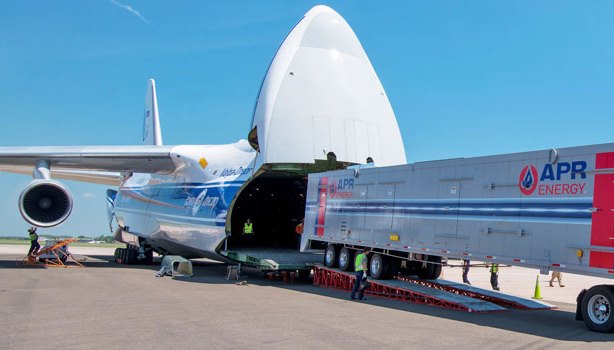The collapse in commodity prices caused many projects across the African continent to stall. Companies also have been reluctant to build new projects, and the latest report from PricewaterhouseCoopers estimates that the mining sector in this region has suffered $4.2 billion (R60 billion) worth of impairments.
In total, the mining industry has decreased by about 30% over the past three years, and while commodity prices have increased in recent months, experts predict that the industry is likely to still see substantial volatility and slow growth in 2017.
According to Colm Quinn, Regional Sales Director at APR Energy, the rebound in commodity prices should usher in new projects as well as expansions to existing operations. At the same time, he points out that the lack of investment in the sector over recent years will result in significant challenges for mining in 2017.
“The availability of power will be one of the biggest challenges for mining over the coming years,” Quinn said. “Mining operations in the region historically have experienced a lot of difficulty with power failures, and the absence of new developments since 2014 means that sufficient electricity generation and distribution infrastructure are not yet available to many new sites.
“Given the vast amount of power required to run a mining operation, this directly translates to a lack of production capabilities and ultimately a lack of revenue. Installing new permanent generation and distribution capacity can take anywhere from three to five years – or even longer – which would severely limit the pace of a mining recovery in Southern Africa. Permanent generation also is capital intensive, which could further slow this process,” Quinn continues.
He notes that there are many other challenges to growth that still threaten mining companies in the region. “Operational costs for mines, especially in South Africa, are approaching record levels, and we have seen some mines being placed under business rescue. There are many aspects to consider, but one of the most important things for mines right now is to be able to increase production as quickly as possible, and to be able to deliver consistently with as little downtime as possible.”
Quinn states that deploying mobile fast-track power to expanding and new sites as an interim solution could translate directly into revenue for a mining operation. “Simply put, the quicker a mine can start to increase its production, the quicker it can start earning revenue and attract further investment. There is also no reason to wait years for the infrastructure. Fast-track power solutions can be deployed as quickly as 30 to 60 days, bringing guaranteed power supply and uptime to an operation.”
He adds that finding a fast-track power supplier that can deliver is paramount. “You need a supplier that can deploy in the shortest possible time. It is also vital to find a fuel-flexible solution because choosing the wrong kind of fuel, or not being able to switch between fuel sources as cheaper options become available, could needlessly drive up costs.”
APR Energy provides a broad range mobile fast-track power solutions that can be scaled to the requirements of any operation. “APR Energy has the youngest, most advanced fleet of generating capacity in the industry, and our technology goes beyond the diesel power modules and HFO engines typically used in the mining sector. As the world’s leading provider of mobile turbine power solutions, we are the only fast-track power company able to offer the flexibility to seamlessly switch between conventional fuels like diesel and natural gas as well as readily available liquid petroleum gas (LPG). The ability to use a range of fuels depending on price and availability can result in significant cost saving for mines operations.”
The company also is introducing solar hybrids, which will enable mining operations to benefit from low-cost, emission-free solar power when the sun is shining while providing the assurance of uninterrupted electricity thanks to the accompanying diesel generating capacity. “One final advantage is that APR Energy’s full-service solution includes staffing to operate and maintain the plant, allowing a mine to focus on its core activities,” Quinn states.
“Global commodity prices are staging a recovery, and Southern Africa’s mining operations will need to mobilise as quickly as possible if they are going to take full advantage of the coming rebound. Access to reliable, cost-effective power should not be stumbling block,” concludes Quinn.











